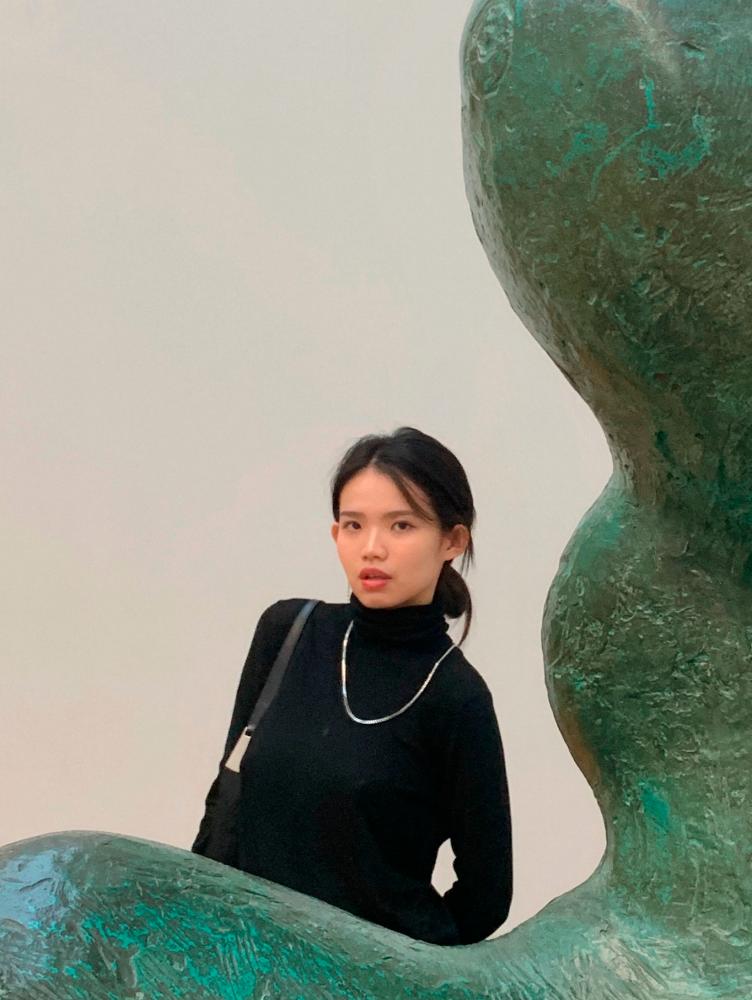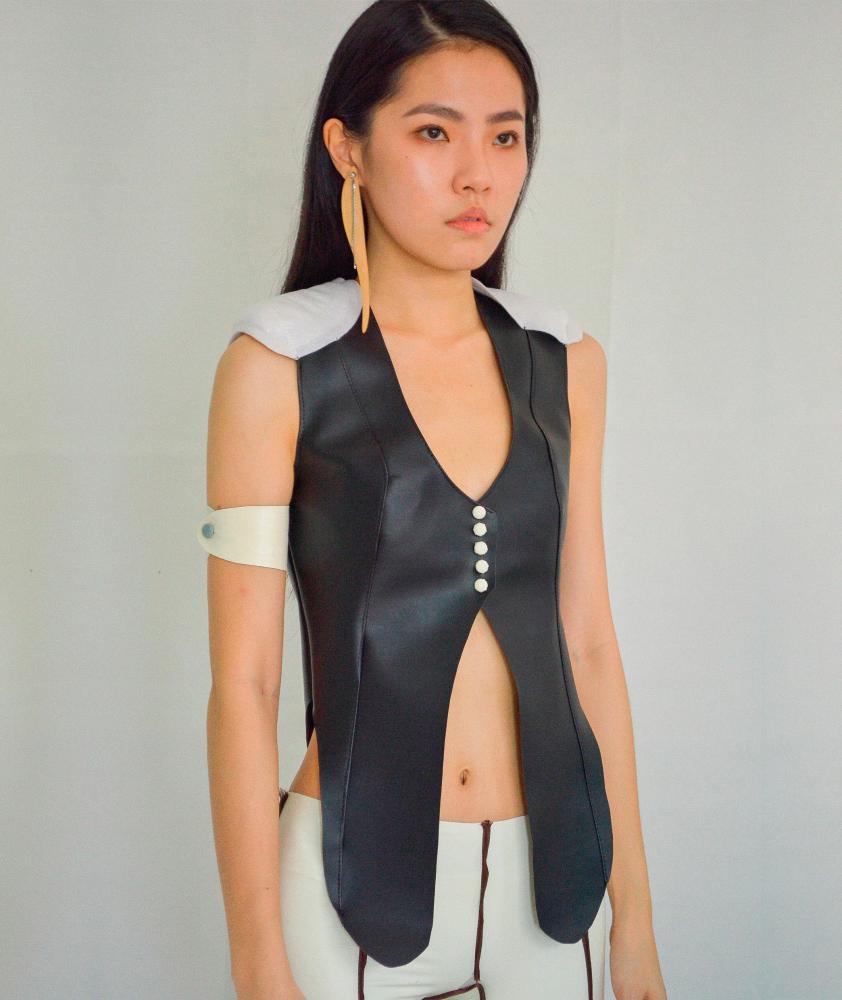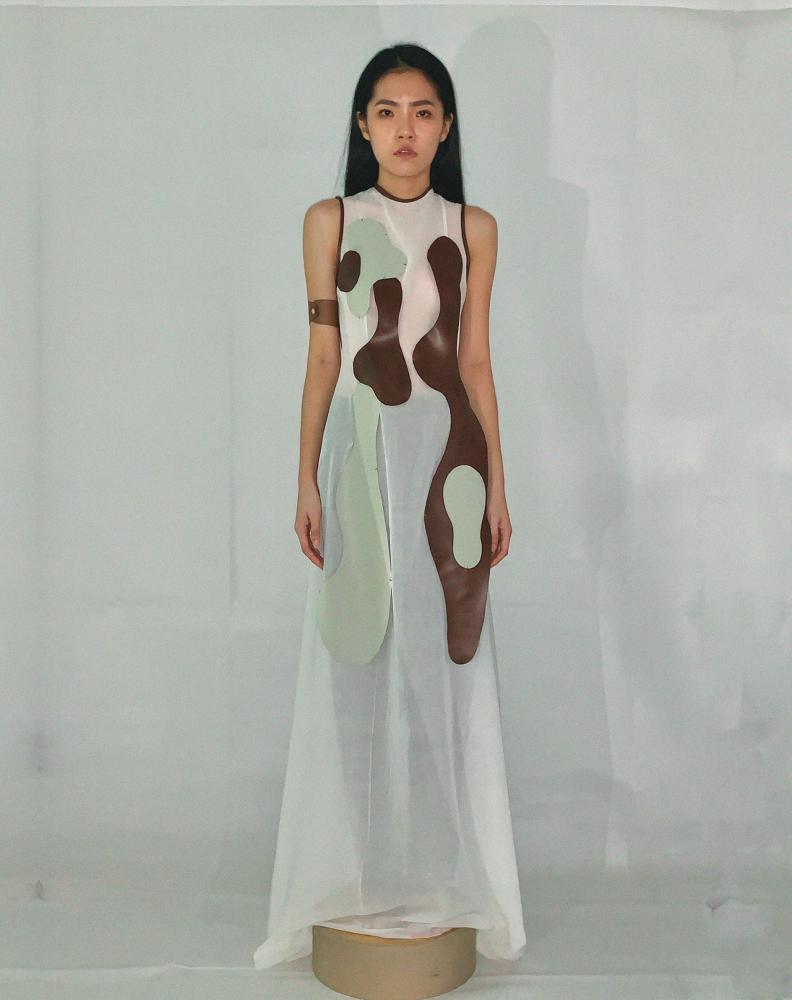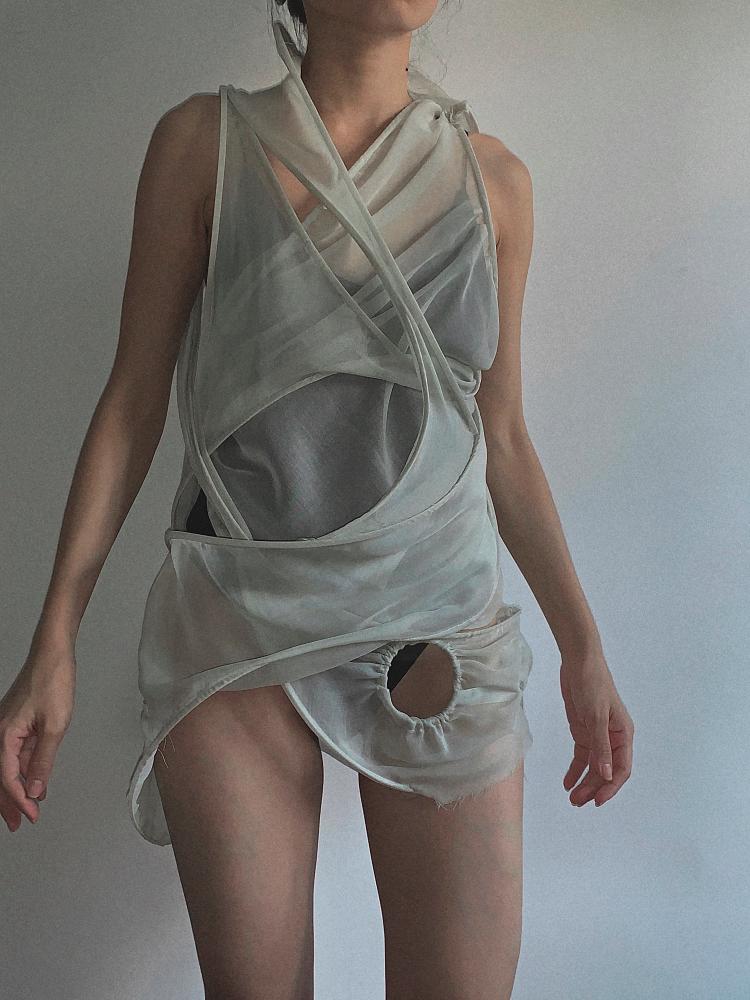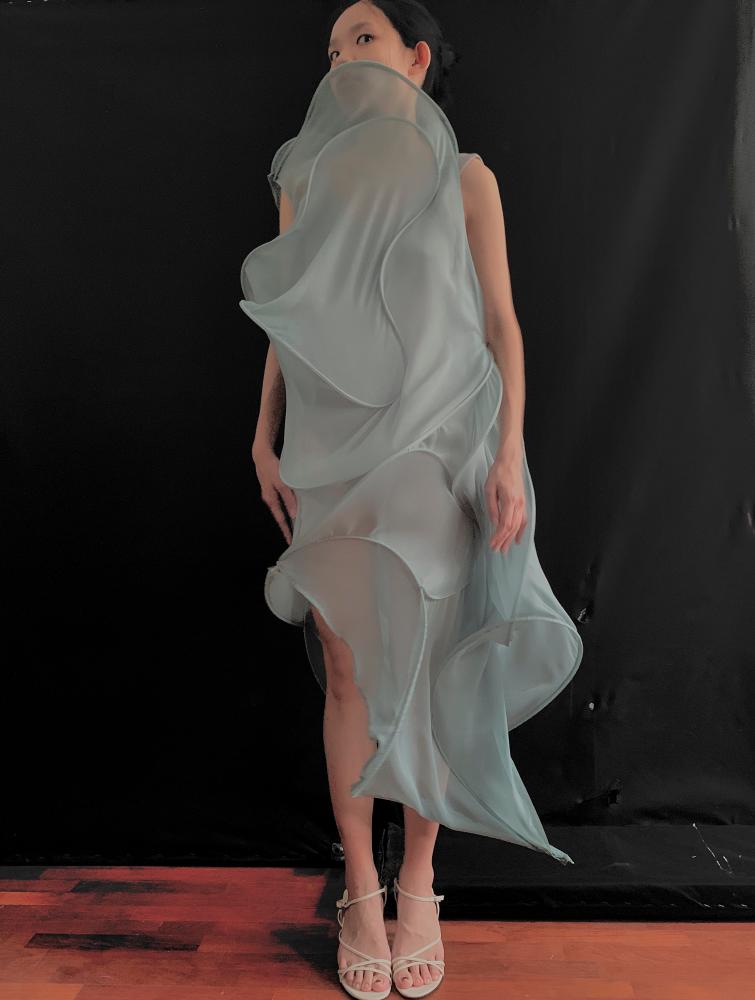With fervent obsessions for the nonconforming curve, the unintentional line and the uncertain form, fashion designer Caro Chia conceptualises garments as uninhibited, poetic sculptures to be worn on the body, evoking a sense of quiet drama.
“I love the desire of wanting to be present in the frenetic life and to dress up in order to present the most authentic self,” she shares.
Chia’s abstract love for fashion is almost exclusively reserved for the exquisite creation and meticulously constructed sculptural designs that revolved around biomorphism – ostensibly-shaped or shapeless forms vaguely influenced by life in general, including by the shape-shifting spherical forms of germs, amoebas and embryos.
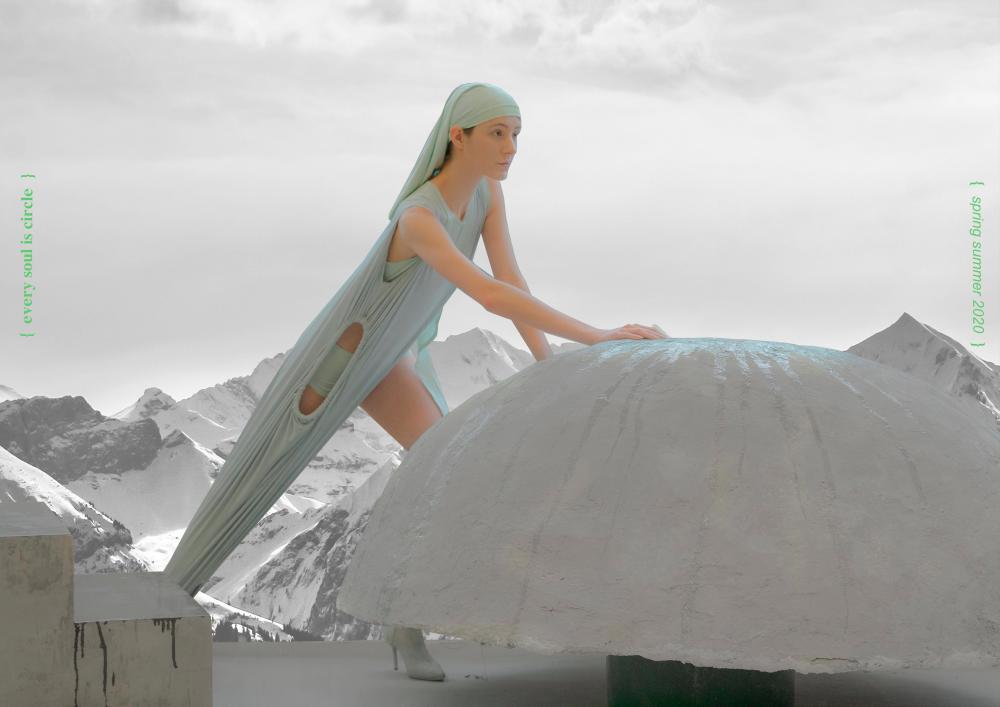
The young University of Brighton BA Fashion with Business Studies graduate’s degree show, titled Every Soul is Circle, interprets contemporary dance taking place through tight, sculptural overalls. Each design displayed her technical expertise in draping and gathering different forms across the body, as soft stretch jersey clings onto the skin to simulate sophisticated tension with every poetic movement of the body.
“I’ve long dug the concept in between sculpture and fashion,” Chia explained to me. “Sculpture tends to be appreciated without any preconceived expectation of how it should look like, but in fashion, we see clothes with expectations of how it must be as it looks ... without the imagination as to how an artist approaches a sculpture.”
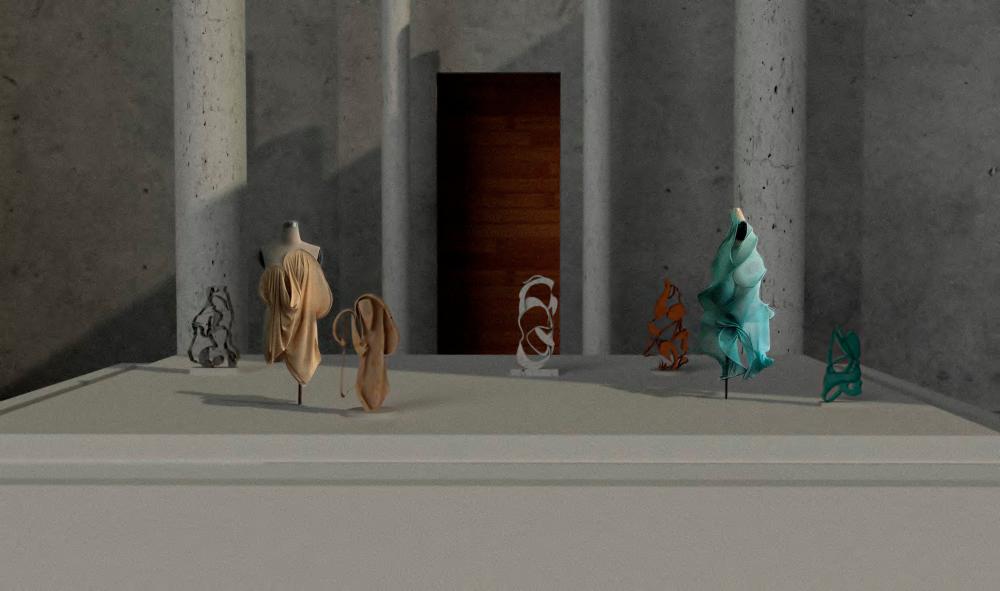
She cited her favourite sculptors Barbara Hepworth and Jean Arp, whose work exemplifies modernism and abstract art as inspiration, as well as building a vision to view fashion through art as contextually subverse and inverse in their ambiguous sculptures to create new design language.
“Their work draws parallels between human connection and Mother Nature; it feels gentle to the soul, as if there are no rules applied, so I wonder at the relation of form and fashion.”
She pushes the boundaries and sees the human body as a playground of infinite possibilities: “It’s really about the earnest experimentation and genuine interest of what could happen on a body when I attempt to assimilate elements from sculpture and fashion.
“I guess by examining extreme possibilities in contemporary fashion, I hope to present an unfiltered yet sophisticated look that elevates modernity. However, the desire to create something entirely new out of intuition, but also curiosity, has spiralled into an obsession.”
To create something truly original that has never existed before, Chia adopts unconventional techniques and innovation explored through a variety of seductive material such as latex, faux leather and others to make garments appear like sculptures.
Oftentimes, Chia reworks her evolutionary and imaginative approach in her favour, but her fun experimentation is not without thwarting frustration.
She shares: “While having a good idea is really exciting and inspiring, several experiments with nothing in fruition can be rather infuriating, and that is the price of experimenting with unfamiliar or never-been-used techniques.”
Nevertheless, necessary improvisation hasn’t derailed Chia’s approach to design, but honed it further to reach new heights.
Elsewhere, a few of Chia’s avant-garde dresses deliberately exaggerate heavenly figures, with skeletal silhouettes to appear vulgar but sophisticated.
These unusual garbs are a biomorphic convergence of fashion and art, transforming from non-wearable sculptures to wearable sculptures, while challenging how well we adapt to absolute change.
I asked Chia what she thinks of when creating clothes. Does she think of how the body would wear the clothes, or how the clothes would wear on the body?
“It depends on my intention on creating, to be accepted by the many, or the niche. Physical comfort remains essential when designing clothes, but not when making art. If my starting point when designing clothes is from an art perspective, then comfortability will be neglected,” she replied.
Chia quoted Rei Kawakubo of Comme des Garçons: “If I do something I think is new, it will be misunderstood, but if people like it, I will be disappointed because I haven’t pushed them enough. The more people hate it, maybe the newer it is. Because the fundamental human problem is that people are afraid of change.”



